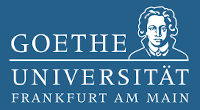«No worshipping the images of saints...»: the perception of the biblical prohibition in the culture of the Russian Subbotniks in the 18th –19th centuries
DOI:
https://doi.org/10.31168/2658-3356.2018.9Keywords:
Judaizers, Subbotniks, Mosaic Law, icons, iconoclasmAbstract
One of the main markers of the Russian Subbotniks movement was the prohibition of icon-worship, mentioned in the earliest official sources about the Judaizers. Case investigations reflected in the archival documents bristle with information about rejection of icons by sectarians. But besides these uninformative stereotype accusations, we also find more detailed descriptions of iconoclastic ideas and practices of the «Russian Jews». These were diverse practices – individual, collective, secret, public – of rejecting images. Some of them became specific rituals of revealing followers of «Mosaic Law» to the church and secular authorities. These were practices of desecration of icons – also more or less concealed and demonstrative; some of them were harsh and aggressive.
Proving the importance of the prohibition of the icon worship, the Judaizers traditionally referred to the Old Testament texts – i.e. the Pentateuch, the Book of Psalms and Book of Wisdom. The Molokan-Subbotniks in similar cases used the New Testament as well.
The attitude to the sacred images became a popular subject of disputes between the Judaizers and missionaries in the last decades of the 19th century. The efforts of the missionaries to distinguish between icons and idols were in vain. The Subbotniks did not accept arguments that were not based on the quotes from the sacred texts. And the Orthodox Christians priests, in turn, could not adequately use the potential of patristic theology, revealing the essence of Christian worship of icons. Their arguments turned out to be irrelevant for representatives of a typical textual community.
Strict prohibition of icon-worship did not exclude substitute and visualization practices in the Subbotnik communities. These were the replacing of icons by the Bible and sacred inscriptions, the use of paintings of the Old Testament subjects as well as drawings depicting the All-Seeing Eye and the ritual of venerating the image of Moses, reminiscent of the worship of the icon in the Orthodox Christianity.












